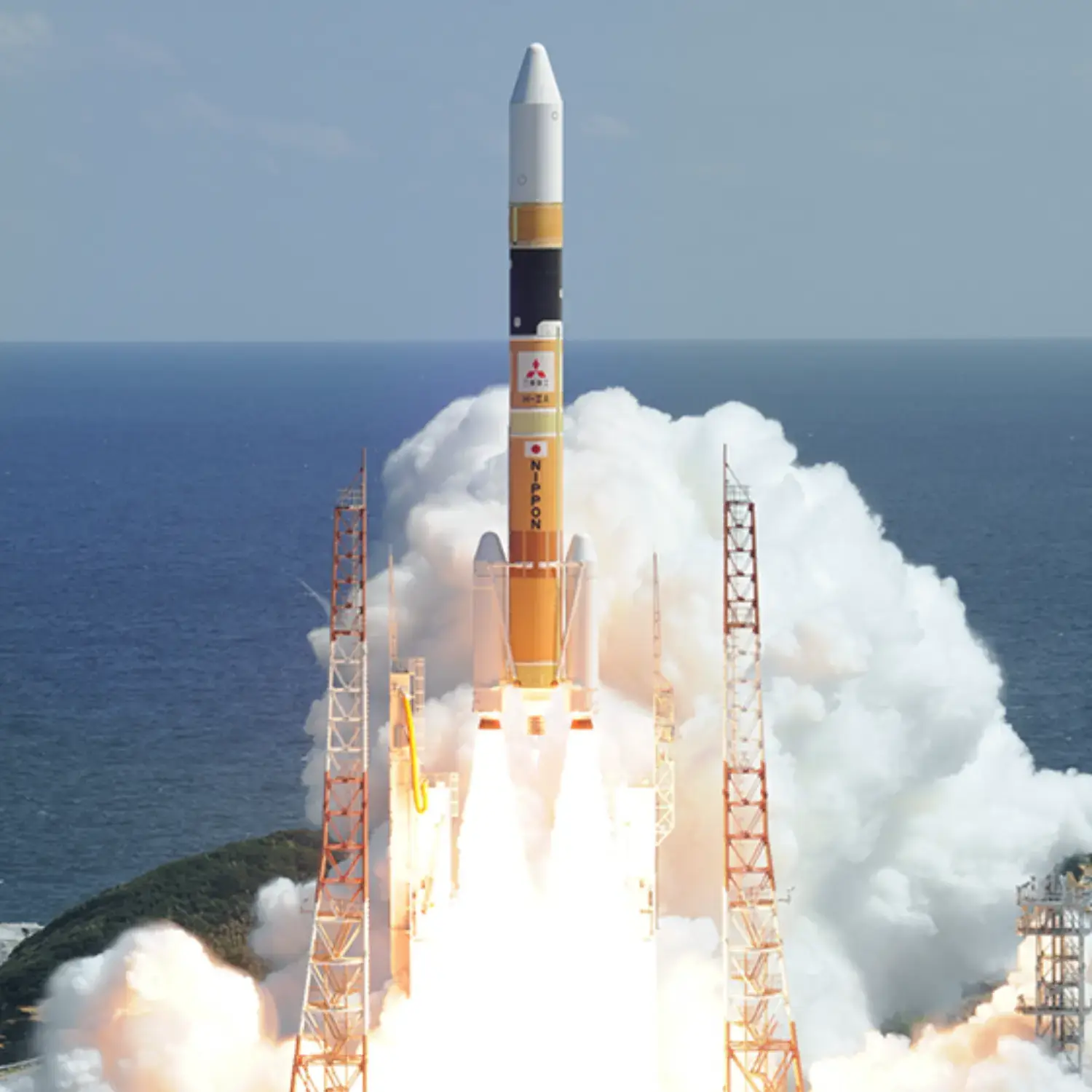/
Daichi 2, SPROUT & Others
Launch Success
Liftoff Time (GMT)
03:05:14
Saturday May 24, 2014
Watch Replay
Official Livestream
Mission Details
Daichi 2
ALOS 2 (Advanced Land Observation Satellite 2) or Daichi 2 is a radar Earth observation satellite to be used for cartography, regional observation, disaster monitoring, and resource surveying. It is the follow up to the radar component of ALOS (Daichi). The state-of-the-art L-band Synthetic Aperture Radar (SAR) aboard ALOS-2, which is an active microwave radar using the 1.2 GHz frequency range, which, in responding to society's needs, has enhanced performance compared to DAICHI/PALSAR. The SAR is capable of observing day and night, and in all weather conditions. ALOS-2 has a spotlight mode (1 to 3 m) and a high resolution mode (3 to 10 m), whilst PALSAR has a 10 m resolution. It allows comprehensive monitoring of disasters by providing users with more detailed data than DAICHI/PALSAR. The observation frequency of ALOS-2 is improved by greatly expanding the observable range of the satellite up to about 3 times, through an improvement in observable areas (from 870 km to 2,320 km), as well as giving ALOS-2 a right-and-left looking function, currently not available on DAICHI/PALSAR. ALOS-2 is also equipped with the Automatic Identification System for ships (AIS) receiver so that the satellite will also monitor oceans by receiving AIS signals from vessels. The SPace based AIS Experiment (SPAISE2) is a high performance satellite AIS. SPAISE2 development is JAXA's ongoing project in cooperation with NEC Corporation.
Sun-Synchronous Orbit
1 Payload
2,120 kilograms
Rising 2
Rising 2 is an Earth observation satellite built by the Tohoku University located in Sendai, Japan. The space mission is to monitor Sprites (lightning effects) phenomenon in the upper atmosphere.
Sun-Synchronous Orbit
1 Payload
50 kilograms
UNIFORM 1
UNIFORM 1 (University International Formation Mission) is part of a project with the goal of developing a wildfire monitoring system with micro satellite constellation to achieve high-time resolution. UNIFORM-1 is based on a 50 × 50 × 50 cm satellite structure with two deployable solar arrays.
Sun-Synchronous Orbit
1 Payload
50 kilograms
SOCRATES
SOCRATES (Space Optical Communications Research Advanced Technology Satellite) is a microsatellite developed by NICT (National Institute of Information and Communications Technology), Koganei, Tokyo, Japan. The mission is to demonstrate and validate the operation of SOTA (Small Optical Transponder), a laser communication system in space for microsatellites and eventually in nanosatellites. SOCRATES is built AES (Advanced Engineering Services Co.,Ltd. and uses the small satellite standard bus with two deployable solar arrays. The satellite is three axis stabilized.
Sun-Synchronous Orbit
1 Payload
48 kilograms
SPROUT
SPROUT (Space Research On Unique Technology) is the second small sized satellite under development at Nihon University. The development of SPROUT began in the winter of 2005, as a successor of SEEDS. SPROUT consists of a cubic main section that is 20 cm long per side, and a combined membrane structure section which is 1.5 m long. After reaching orbit, SPROUT will carry out several technological experiments at orbital altitudes of 600 km. It will verify the deployment of a membrane structure and test at the end of the mission the de-orbiting by utilizing air-resistance by using the deployed membrane structure. Additionally, earth imaging and amateur radio communications services by transmitting audio and visual data from space to earth's surface will be performed.
Sun-Synchronous Orbit
1 Payload
5 kilograms
Launch Site
Stats
H-IIA
24th
Mission
2nd
Mission of 2014
2014
30th
Orbital launch attempt

